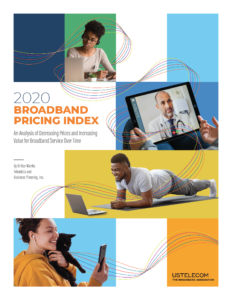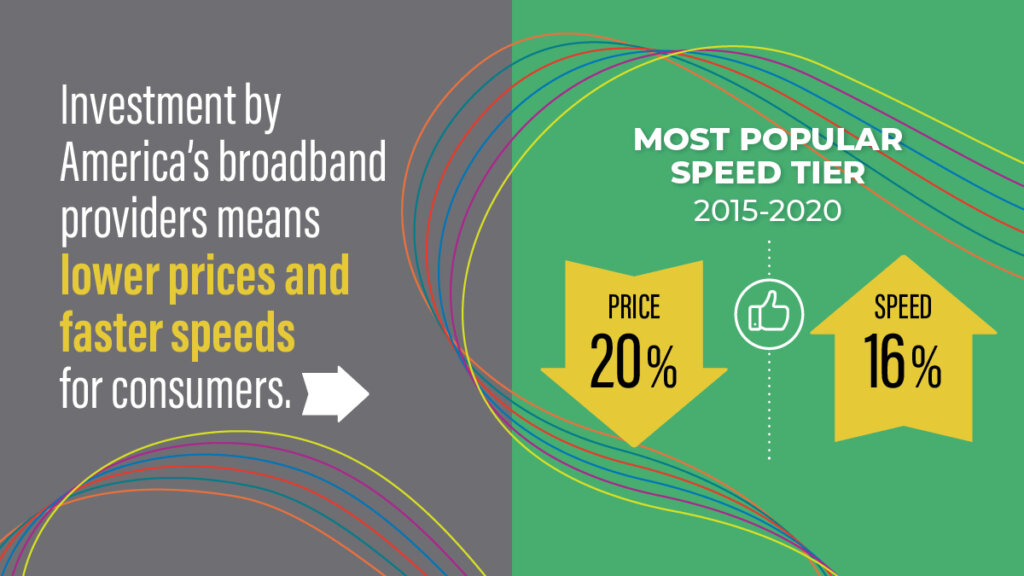September 16, 2020
Download:
 The 2020 Broadband Pricing Index (BPI) is new research showing the decreasing cost and increasing value of broadband service in the United States between 2015-2020.
The 2020 Broadband Pricing Index (BPI) is new research showing the decreasing cost and increasing value of broadband service in the United States between 2015-2020.
This research, using FCC and other public data sources, assesses recent trends in residential fixed broadband pricing between 2015 and 2020 in the United States. The analysis reveals that during this period, there have been substantial reductions in price for both the most popular and highest-speed broadband internet services, and also significant improvements in broadband speeds. Simply put, Americans are paying less today for broadband services that are significantly more capable than they were five years ago.
BPI makes price comparisons over time on two fronts: The most popular speed tiers in 2015 and 2020 and the highest speed tiers in 2015 and 2020.
This new report documents the degree to which this investment has produced broadband services that are not only increasingly fast, but also significantly less costly than even just five years ago.” Jonathan Spalter
The key findings:
- The most popular tier of broadband service in 2015 (BPI-Consumer Choice) is now priced 20.2% lower and offers 15.7% faster speeds in 2020 on an average-subscriber-weighted basis.
- The highest speed offerings in 2015 (BPI-Speed) are now priced 37.7% lower and offer 27.7% faster speeds in 2020 on an averaged subscriber-weighted basis.
- Further, these price reductions run counter to inflation, which has increased consumer costs for overall goods and services by 9.3% over the same five-year period analyzed in this report. When inflation is considered, the real price of the most popular tier of broadband service has dropped by 28.1% since 2015; and the real price of the highest speed broadband service has dropped by 43.9%.
- This combination of declining prices and rising speeds delivers even greater value to consumers—as shown by a declining cost per megabit of connection speed (Mbps) of 37.9% for the most popular service and 56.1% for the highest speed service.
This data shows that broadband is becoming more affordable—thereby reducing, but certainly not eliminating, an obstacle to adoption. For instance, we know that 30% of K-12 students do not have access to high-speed internet and/or the devices needed to learn from home. More work, understanding, and concrete data is needed around the vital issue of affordability and this report seeks to contribute to that discourse.
